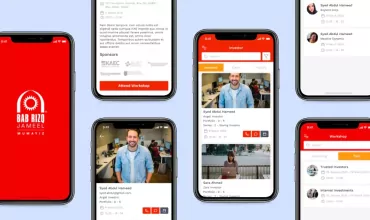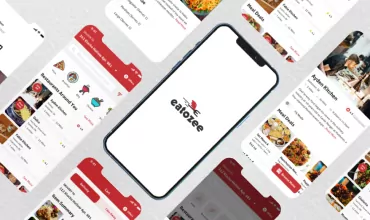Your Next Front-End Project: How Do You Choose The Right Framework?

Table of Contents
The prospect of creating a new product is quite exciting, but organizations face several challenges as they select the best front-end framework for their needs.
Web developers and designers frequently use front-end frameworks because they can significantly simplify their work while providing an excellent user experience. Here are our suggestions for selecting the best front-end framework for your front-end development projects in 2022-23.
Every company’s primary concern is the user interface in the modern digital age. People are drawn to a straightforward, tidy, and well-organized experience, regardless of how complicated the backend processes are.
However, functionality and operability should not be sacrificed for a simple user interface or vice versa. That is when the concerns begin to surface for frontend projects.
To remain competitive, business owners expend significant effort in selecting the best web app frameworks. Here are the key factors to consider before deciding on the best front-end technology for 2022-23.
Why does Picking the Precise Technology Matter?
With the implementation of Front-end web development projects, a lot has changed over time as new approaches to creating web apps have surfaced. The success of your project depends on selecting the appropriate technological stack in this highly competitive period.
There are a variety of reasons why businesses favour one technology over another; some may value vertical stability, while others may focus on the crucial competencies of their development team. Here are some of the main factors on how to choose front end frameworks and back technology that can influence your projects:
1) Amount of time needed to code
The amount of time needed to solve an issue is a critical factor in selecting the best technology. It is preferable to use technologies that can offer shortcuts to get outcomes in a shorter time if you need a solution within the next few months and begin creating the code today.
While certain technologies could allow for speedy development, others might have a challenging learning curve while providing excellent functionality. The decision essentially comes down to team competencies and project timelines.
2) Code maintenance
The appropriate technology selection from the code maintenance perspective can affect the code’s longevity. For example, a long-term utility may be compromised if the code cannot be improved, maintained, or expanded easily.
3) Future support
It is preferable to stay away from a specific technology entirely if future support for it is questionable. The right skills will also be tougher to obtain, and there won’t be any cutting-edge development tools, which will probably slow down the execution of the code.
To prevent these problems, it makes more logical to use technologies that are more widely used and respected in the sector.
Factors to Consider While Selecting the Best Front-end Framework
We will discuss significant factors to decide which frontend framework is best and how to select them from the list of most popular front-end frameworks.

1) Productivity and Performance Levels
The amount of time needed to solve an issue is a critical factor in selecting the best technology. It is preferable to use technologies that can offer shortcuts to get outcomes in a shorter time if you need a solution within the next few months and begin creating the code today.
While certain technologies could allow for speedy development, others might have a challenging learning curve while providing excellent functionality. The decision essentially comes down to team competencies and project timelines.
2) Backing Server-side Rendering
A superior user experience is offered by server-side rendering, particularly over mobile networks. This is especially true of content-driven websites, where a lack of it may cause a drop in search engine ranks.
Unfortunately, one of the first widely used front-end frameworks, Angular, does not enable server-side rendering. However, the more recent Angular 2 version does.
3) Support for Mobile Development
Most customers use mobile devices to access your website. Anyway, in this day and age, mobile development is crucial. Choose a front-end framework suitable for your business that offers simplicity and options for developing mobile apps. Every application must adopt a mobile-first strategy, given the increasing use of mobile devices.
Businesses are discovering that mobile apps are used more frequently than web applications. Modern online front-end stacks offer appealing prospects for applying this knowledge to mobile development, even though some of them would require writing as native iOS or Android applications.
4) Significant Features
Check to see if the framework has enough functionality and support for state management, templates, form processing, HTTP connectivity, and validation.
If a framework has all the necessary components to enable your project, you will deem it rich. Consider conducting a thorough feature comparison between the framework of your choice and the alternatives to decide which framework is best for front end development across your projects.
5) Effective Usability
Check the usability of the front-end framework you’ve chosen before you begin front-end development. You cannot be certain about it as you get closer to that specific framework’s core traits, capabilities, and limitations.
No matter how much you research or study this framework and its documentation, unless you use it first, you won’t be completely confident. Discover the CLIs, libraries, and plugins that the framework supports.
To experiment, use them in tiny projects. Before beginning development, become familiar with the IDE and typescript, and test out every available framework function.
6) Flexible Integrations
If you want to customize your forthcoming online project, you should think about using a front-end framework. Watch for component sway and other features you want your project to have. In addition, the chosen framework must offer various configuration options and be simple to modify to meet the needs.
For instance, Angular 2 provides fantastic possibilities in this area because it’s quick and simple to set up. On the other hand, React, Vue, and Aurelia offers the ability to switch out components as needed.
Moving Forward with Result-driven Front End Web Development Projects
We discussed how to choose a framework for web development projects. The top front-end frameworks for 2022 and the libraries to use are Ember.js (for creating a large-scale website with dynamic functionality and a sophisticated user interface), jQuery (for creating a desktop application), Vue.js (for creating a flexible and challenging project), Angular (for creating your complex enterprise application), SPA, and React.js (for creating single-page applications).
A novice level of expertise is also easily achievable with almost all front-end frameworks. However, it matters which is the best front-end framework for the specific project in your hand. You should speak with the most experienced front-end development companies who can help you get started before selecting the best front-end framework.
For any further questions or technology consultation, you may get in touch with our specialists, drop a line at hello@indianic.com.
FAQs on Best Front-End Frameworks
How do I pick a user interface framework?
The factors that should be considered when selecting a UI development framework for your upcoming application development project are ease of learning, overall complexity, interoperability with the development platform, capacity to handle and solve basic problems, and ability to adapt.
What is the easiest front-end framework?
One of the easiest and clearest front-end frameworks is Vue.js. Even though it is quite small, it has a component-based architecture, a virtual DOM, and two-way data binding. All of these factors improve performance and make it easier to track changes and update components.
Which framework for JavaScript should I explore in 2022-23?
In 2022-23, React will be the most widely used web framework, according to more than 40% of professional developers. Facebook created this free JavaScript package, which is used to create incredibly responsive user interfaces.
Is Angular preferable to React?
React outperforms Angular due to its virtual DOM integration and rendering significant improvement. Version migration in React is also straightforward; unlike Angular, you are not required to update software at the moment. Finally, React offers development professionals access to an extensive range of pre-existing technology solutions.
Which language is utilized in the front end the most?
The most commonly used front-end language is HTML (Hypertext Markup Language), a precise markup language. This programming language can be applied to create websites and web applications.



